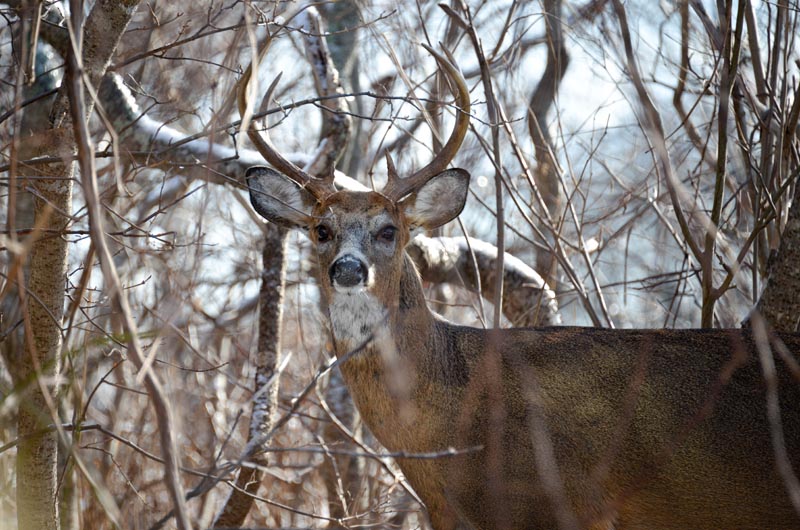The arrival of spring means longer days, budding blooms, birdsong and, unfortunately, the unwelcome arrival of deer in the backyard.
Deer dig up gardens, eat tulips, and trample plants. They scrape bark off young trees and decimate backyard greenery, all in their quest to find food. Bambi is a beautiful creature, but he can be very detrimental to a garden.
So what are the solutions for preventing this chaos?
Take precautions. The best way to alert Bambi and his friends that a backyard isn’t an all-you-can-eat buffet is to purchase a liquid deterrent and spray, spray, spray.
According to Mike Saunier, owner of Heather Gardens in West Tisbury, it’s a good idea to start early in the season so the deer don’t get in the habit of returning to the buffet. Deer are creatures of habit and will return if they’ve fed themselves there before.
“A lot of customers come to us with this problem,” he said. He offers a variety of methods, the primary and most effective one being a liquid deterrent.
“The repellents have a smell and a taste that’s unattractive to them,” said Mr. Saunier, who sells a wide variety of products at his garden center.
Mr. Saunier named Bobbex as a popular brand, which he sells in a quart size bottle for just under $20. Although Bobbex’s website, Bobbex.com, says the product can outlast heavy rains. However, rain can dilute the smell and taste of liquid deterrents, so reapplying each time it rains is vital, Mr. Saunier said.
Jennifer Jamgochian, owner of Multiflora in Chilmark, agrees that liquid deterrents are smart to use, however she said following the directions on the bottle isn’t enough.
Consistency is important, and it’s better to over-spray than under-spray, she said.
“If you keep spraying the plants it can build a residue on the leaf so that it’s not washing off as much. In the springtime when things are first coming out I’ll spray sometimes three times a week.” Bobbex’s recommended usage is every 10 to 14 days or two inches of new plant growth.
Another tip Ms. Jamgochian gives is switching up brands. “Deer have gotten a little bit more resilient to what we use, which is why it’s important to change up the product,” she said.
Mr. Saunier said that there are other deterrents some homeowners swear by, like Irish Spring Soap, but that he’s not certain they’ll work as well.
In the past he has also offered more exotic options such as bovine blood and coyote urine, but products like Bobbex were bigger sellers and more readily available.
Both gardeners offer other options, like planting a garden with perennials and shrubs that deer don’t eat, or eat less often (no guarantees, though). Daffodils, ornamental grasses, lavender and Russian sage are some examples. Ms. Jamgochian says another option is to choose plants that have a minty smell to them, as she has had success in the past using this method.
Fencing is another option. Mr. Saunier suggests customers use a stockade fence, deer netting or any sort of physical barrier. But deer can still find a way in. He’s seen deer get past his six-foot wood stockade fence.
“They can jump pretty high,” he said, so additionally, he applies repellents.
Deer are bound to make a mess of your garden, so be ready for them. Rest assured they will visit, invited or not. The real strategy is in making sure they don’t return.
“Nothing is 100 per cent,” Ms. Jamgochian warned, stating the importance of upkeep. “Just when you think you’re safe, you’re not.”










Comments (1)
Comments
Comment policy »